The 15 Hottest Cities in Europe – 2025 Update
-

- Last updated:
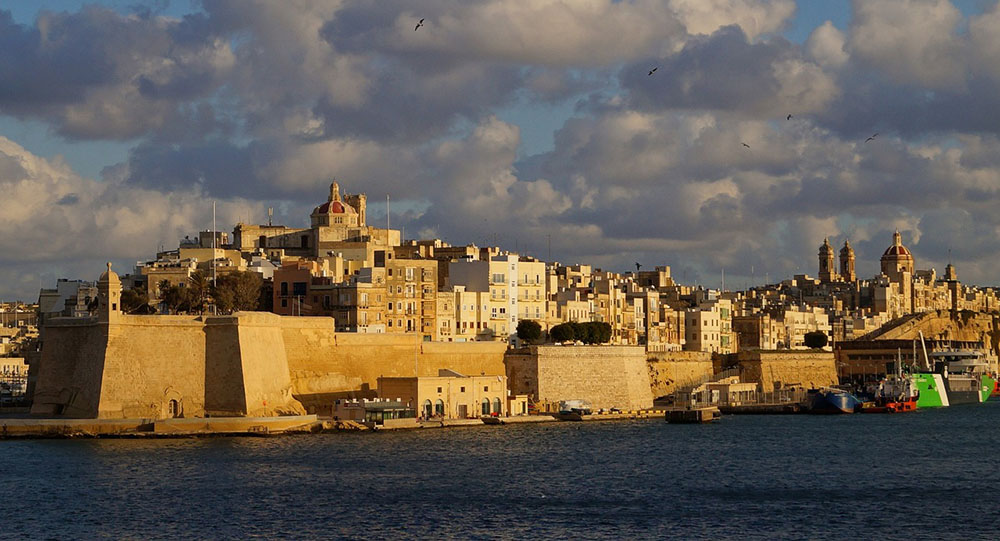
Europe is the hotbed of the world’s culture, the station for history’s greatest empires, and the home of many of today’s industrial giants. The diverse landscapes and the density of modern and ancient artifacts make it a worthwhile adventure for any traveler. No matter where you land, once-in-a-lifetime experiences abound at every turn.
It’s easy to get excited about a trip to nearly any European city. But what’s lost in pictures of famous landmarks and incredible vistas is the heat. While much of the continent has a mild climate and even year-round winter weather, some European locales range from warm to sweltering at all times. If you want the most comfortable experience in Europe, keep the hottest cities in mind as you make your plans.

The 15 Hottest Cities in Europe
Unsurprisingly, the hottest cities in Europe line its southern rim, getting as close as possible to the equator. Hot and humid African and Mediterranean winds make matters muggier in many regions. Dozens of towns along the European coast bring the heat, but these dense urban landscapes set the bar for intense temperatures.
1. Las Palmas, Canary Islands
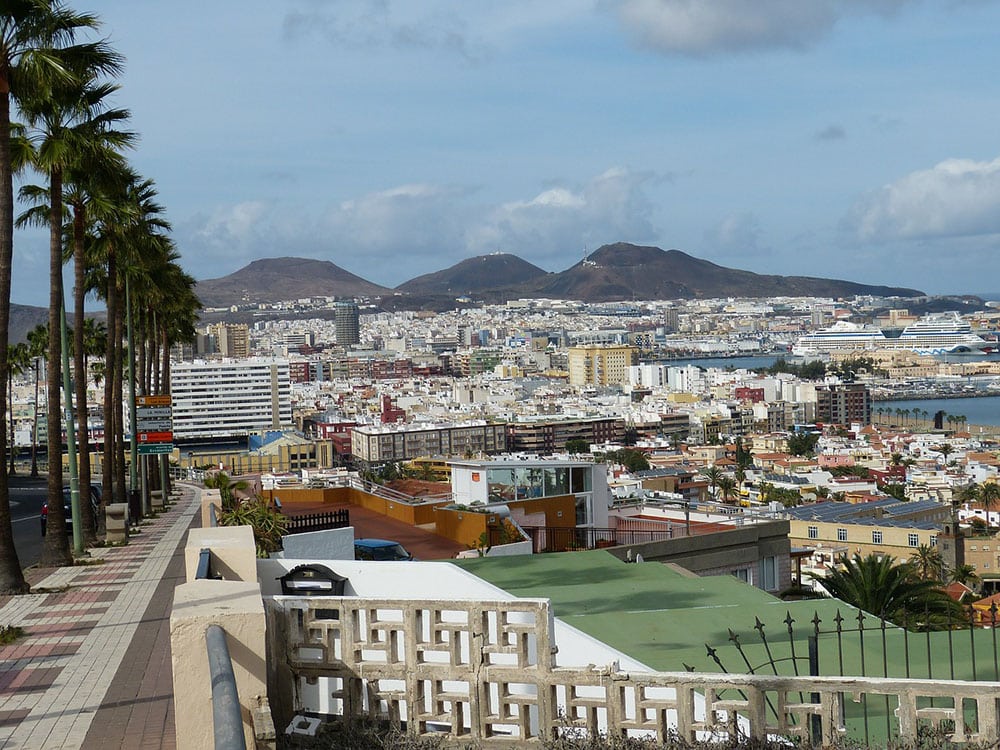
| Mean Annual Temperature: | 70°F/21°C |
| Hottest Month: | August |
| Coldest Month: | January |
| Highest Recorded Temperature: | 111.6°F |
It’s almost cheating to put Las Palmas among the hottest European cities. The capital of Gran Canaria is the largest locale on the Canary Islands, a Spanish archipelago off Morocco’s west coast, and the southernmost entry on this list. With incredible landscapes, limitless on-water activities, and gorgeous weather, it’s one of the best destinations for outdoor-loving tourists.
Las Palmas is mostly sunny, but the humidity stays consistently around 70%. The weather has little variation throughout the year. Winter months have lows of 60°F and highs around 70°, and the hottest summer months peak at 80°F during the day.
2. Nicosia, Cyprus

| Mean Annual Temperature: | 69°F/20.6°C |
| Hottest Month: | August |
| Coldest Month: | January |
| Highest Recorded Temperature: | 115.2°F |
Nicosia lies close to the northern edge of Cyprus, an island nation in the Mediterranean’s corner near Turkey. The area has been occupied for over 4,500 years and has been the country’s capital for more than 1,000 years. Today, it’s the country’s financial center and one of the wealthiest cities in the world.
The climate is hot and dry in Nicosia. Average high temperatures reach 97°F in August, and low temperatures during the winter months from December to February rarely go below 40°F. Although most of the city’s annual precipitation comes in these cooler months, it usually comes in the form of rain or sleet.
3. Larnaca, Cyprus
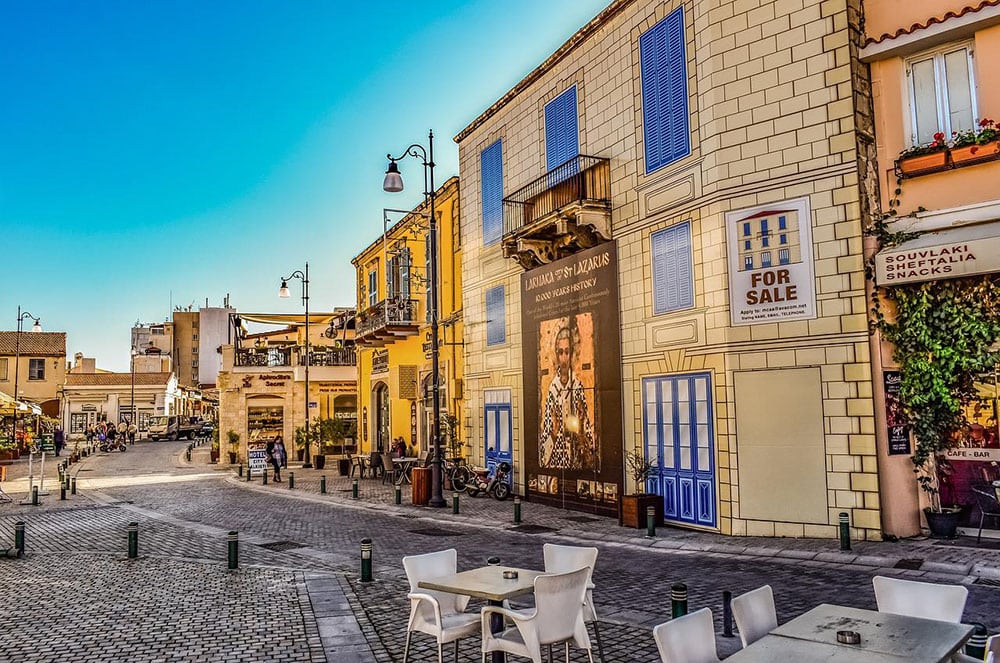
| Mean Annual Temperature: | 68°F/20°C |
| Hottest Month: | August |
| Coldest Month: | January |
| Highest Recorded Temperature: | 106°F |
Larnaca may not be as well-known as other cities listed here, but this municipality of just under 150,000 residents has many noteworthy attractions. It features beautiful coastal weather and views highlighted by a spectacular palm tree-lined promenade. Larnaca is the site of several annual festivals. Alongside its relaxing beaches and landscapes, the city offers glimpses into Cypriot culture with history museums and dozens of educational institutions.
The climate in Larnaca is arid in the summer. High temperatures hover between 90° and 93°F from July through September, and the city only sees roughly ¼” of rain during this stretch. Humidity dips below 60% during these hot months before elevating to over 70% in the winter.
4. Valletta, Malta
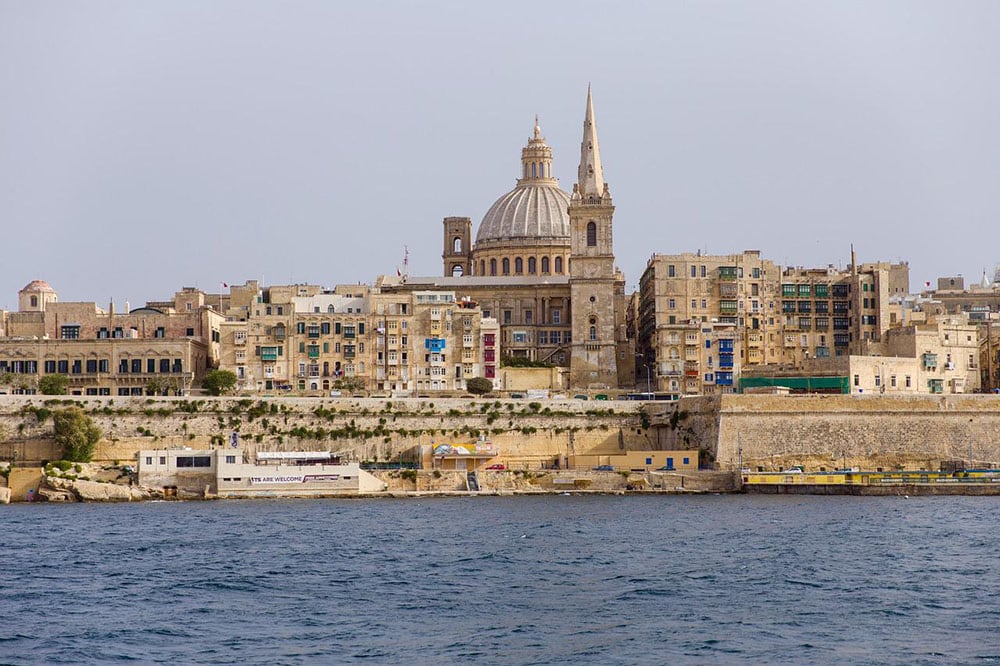
| Mean Annual Temperature: | 67°F/19.4°C |
| Hottest Month: | August |
| Coldest Month: | January |
| Highest Recorded Temperature: | 109°F |
With a dense collection of historical monuments and some of the most intense heat in Europe, the continent’s southernmost capital city, Valletta, overwhelms on several levels. The administrative seat of Malta sees little rain, but high humidity levels across the remote island nation keep it muggy year-round.
Average highs linger around 90°F in July and August, and despite the virtually non-existent precipitation in these hotter months, the humidity stays between 65% and 70%.
5. Seville, Spain
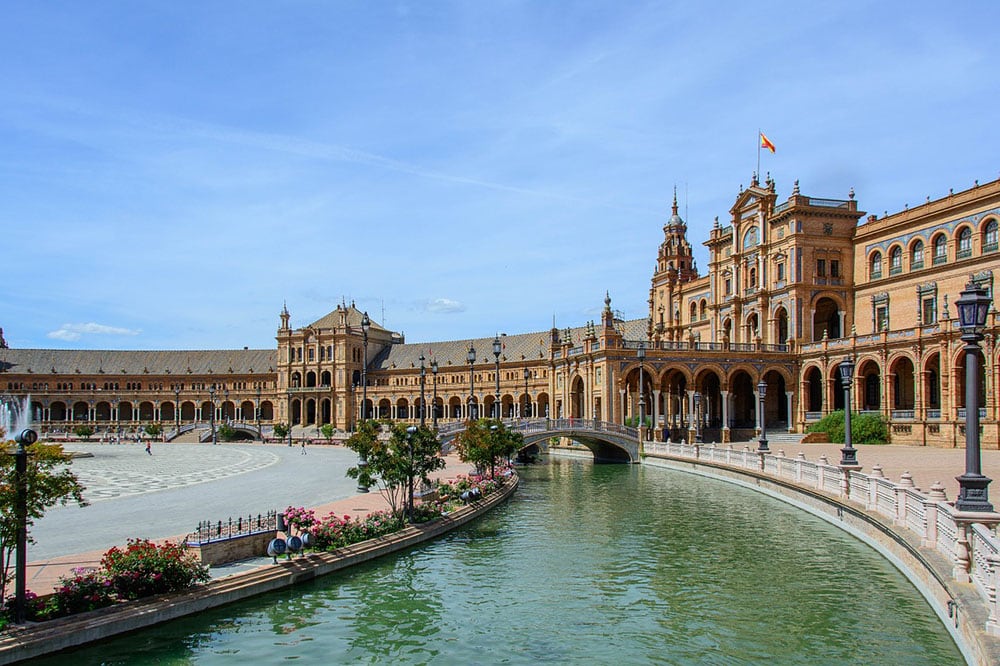
| Mean Annual Temperature: | 67°F/19.4°C |
| Hottest Month: | July |
| Coldest Month: | January |
| Highest Recorded Temperature: | 115.9°F |
Seville is the capital of Andalusia and the fourth-largest city in Spain. The vibrant city is known for its flamenco dancing, lively festivals, and fascinating architecture. Average summertime highs above 97° F also make it one of the hottest places in mainland Europe.
The city gets extremely hot in the summer, often exceeding 100°F during the day. Winters are cooler, featuring highs averaging between 62°–65° F from December to February. It can still get somewhat muggy, as the small amount of rain during this period keeps humidity levels around 70%.
6. Athens, Greece

| Mean Annual Temperature: | 66°F/18.9°C |
| Hottest Month: | August |
| Coldest Month: | January |
| Highest Recorded Temperature: | 118.4°F |
The capital of Greece and one of the world’s oldest cities is also one of the most recognizable. Home of the Acropolis and the Daphni Monastery, Athens has landmarks, museums, and universities touching some of history’s most significant civilizations.
Summers are hot and dry in Athens, with July and August staying around 84°F and sporting maximum temperatures averaging 93°F. The city boasted one of Europe’s highest temperatures of 118.4°F, recorded in 1977. Winters are mild, ranging from 44°–59°F from December to February.
7. Palermo, Italy
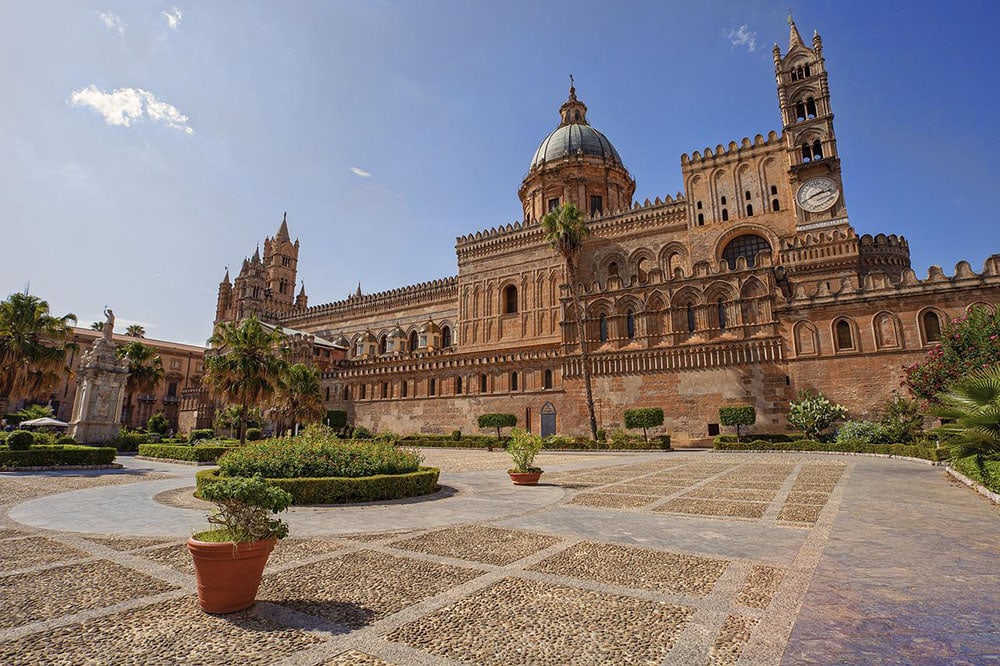
| Mean Annual Temperature: | 66°F/18.9°C |
| Hottest Month: | August |
| Coldest Month: | January |
| Highest Recorded Temperature: | 119.85°F |
Though renowned for its cuisine and art, Palermo’s landscape is as enchanting as its culture. Faced on one side by mountains and the other by the sea, the capital of Sicily is a picturesque wonder from any angle. In its sub-tropical climate, it also has beautiful weather year-round.
Summer highs only average 86°–87° in the hottest months, but balmy nights and winters raise the annual temperature enough to make it one of the warmest places in Europe. Snow is rare, but the city receives consistent rain throughout the year and has a relatively high annual humidity of around 67%.
8. Murcia, Spain
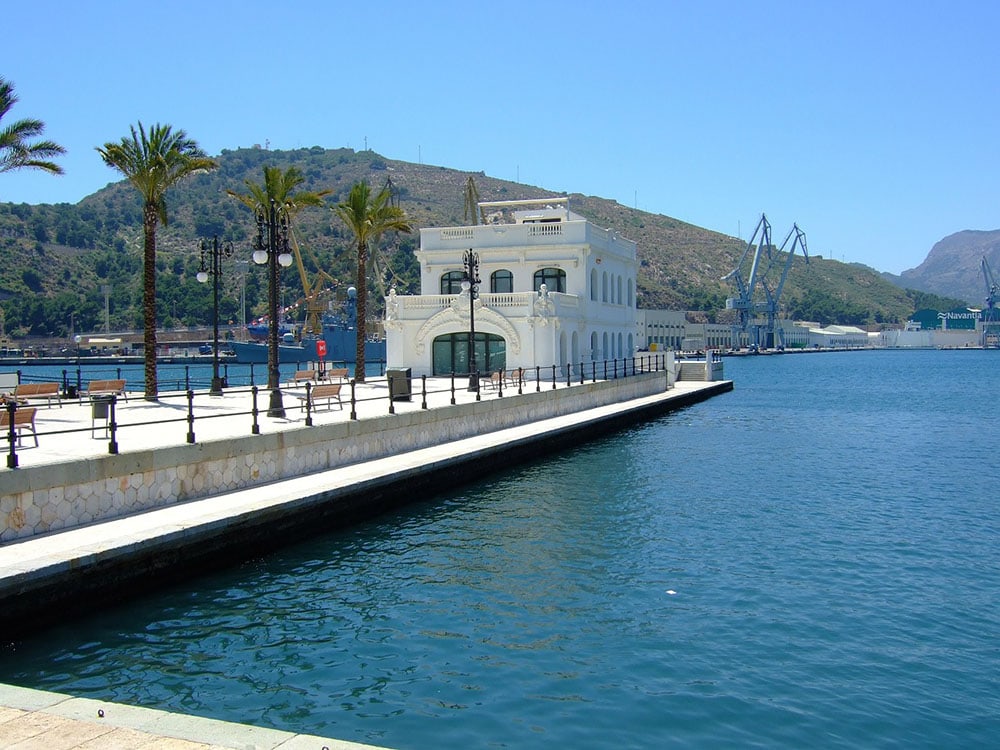
| Mean Annual Temperature: | 66°F/18.9°C |
| Hottest Month: | August |
| Coldest Month: | January |
| Highest Recorded Temperature: | 115.2°F |
Murcia is on the southeast side of the Iberian Peninsula, and it’s a modern Spanish university town featuring the Gothic Cathedral of Murcia and the Glorieta city square among its many historical structures. The city hosts the Holy Week procession every year, followed by the entertaining Spring Fest with various traditional celebrations, making it one of the more exciting places to visit in April.
April is a great time to visit weather-wise as well. The city maintains a tolerable humidity level of roughly 50% from spring through summer before it rises in autumn. With average highs over 90°F in July and August, the lower moisture levels are a welcome relief from the oppressive mugginess.
9. Malaga, Spain
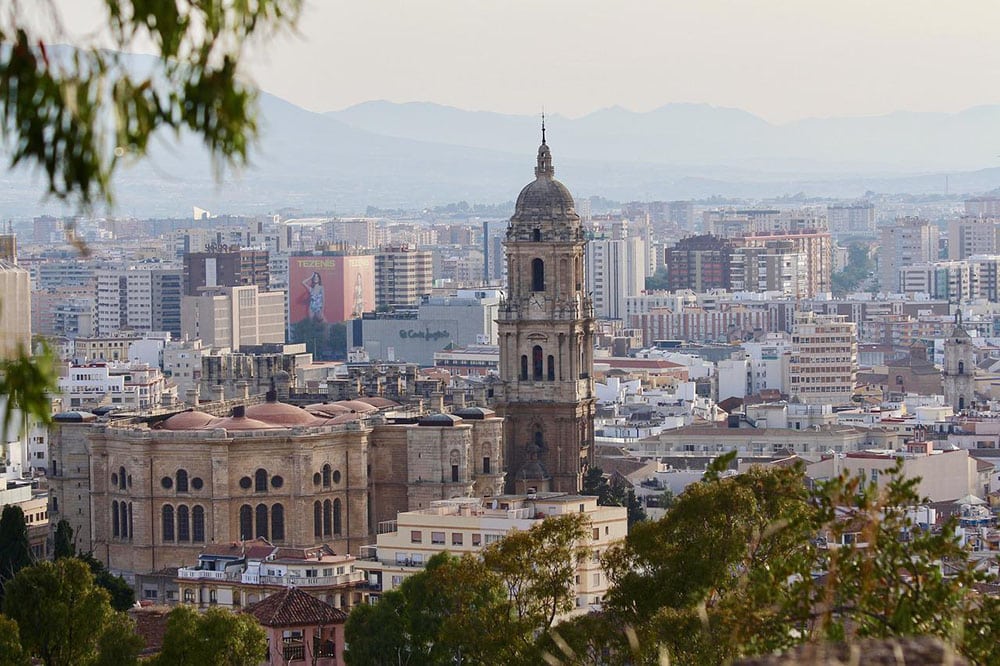
| Mean Annual Temperature: | 65°F/18.3°C |
| Hottest Month: | August |
| Coldest Month: | January |
| Highest Recorded Temperature: | 111.6°F |
As another Spanish city on the Mediterranean coast, Malaga earns its renown with one of the world’s oldest continuously operating ports, which dates back to 600 BC. With over 500,000 residents, it’s one of the hottest large cities in Europe. Temperatures average 65°F throughout the year, with humid winter months getting as cold as 46°F and drier summer days reaching 88°F in August.
10. Valencia, Spain

| Mean Annual Temperature: | 64°F/17.8°C |
| Hottest Month: | August |
| Coldest Month: | January |
| Highest Recorded Temperature: | 109°F |
One of Spain’s oldest and most expansive cities is also one of its hottest. The busy port town, the birthplace of paella and the supposed home to the Holy Grail has mild winters followed by hot, sunny summers. Rain is infrequent, averaging less than 10 inches annually, but its location near the sea keeps the humidity between 65% and 70% through most of the year.
11. Catania, Sicily
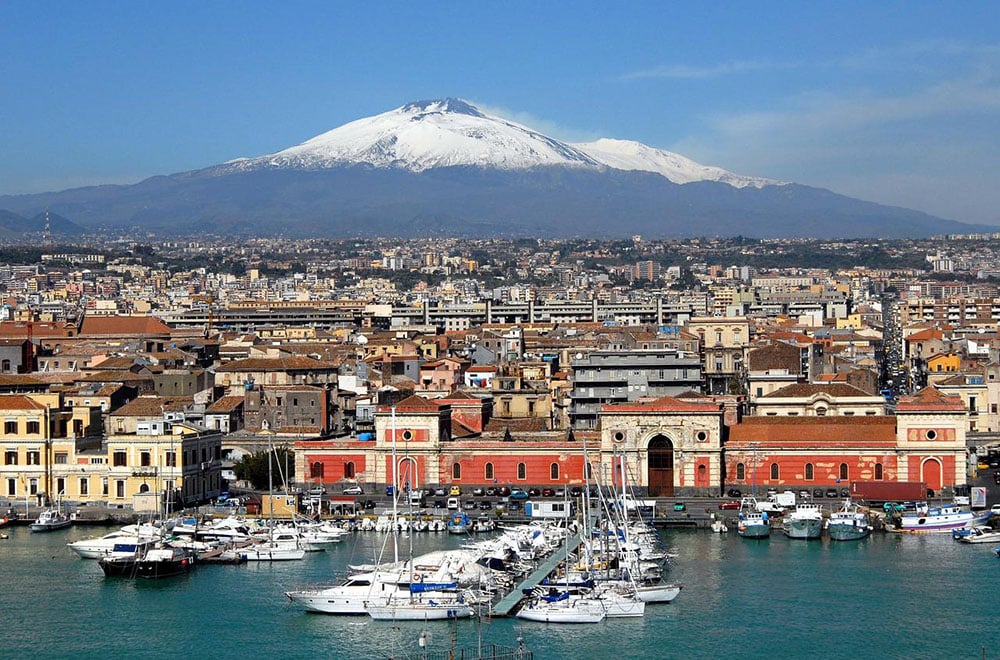
| Mean Annual Temperature: | 64°F/17.8°C |
| Hottest Month: | August |
| Coldest Month: | January |
| Highest Recorded Temperature: | 119.5°F |
With just over 1,100,000 residents, Catania is Sicily’s second-largest city behind Palermo. Sitting halfway down the island’s east coast, the city is less than an hour from Syracuse, where the highest temperature in Europe’s history was recorded in 2021. Although it doesn’t get as hot as Palermo, Catania can get equally uncomfortable thanks to its higher humidity.
12. Palma, Spain
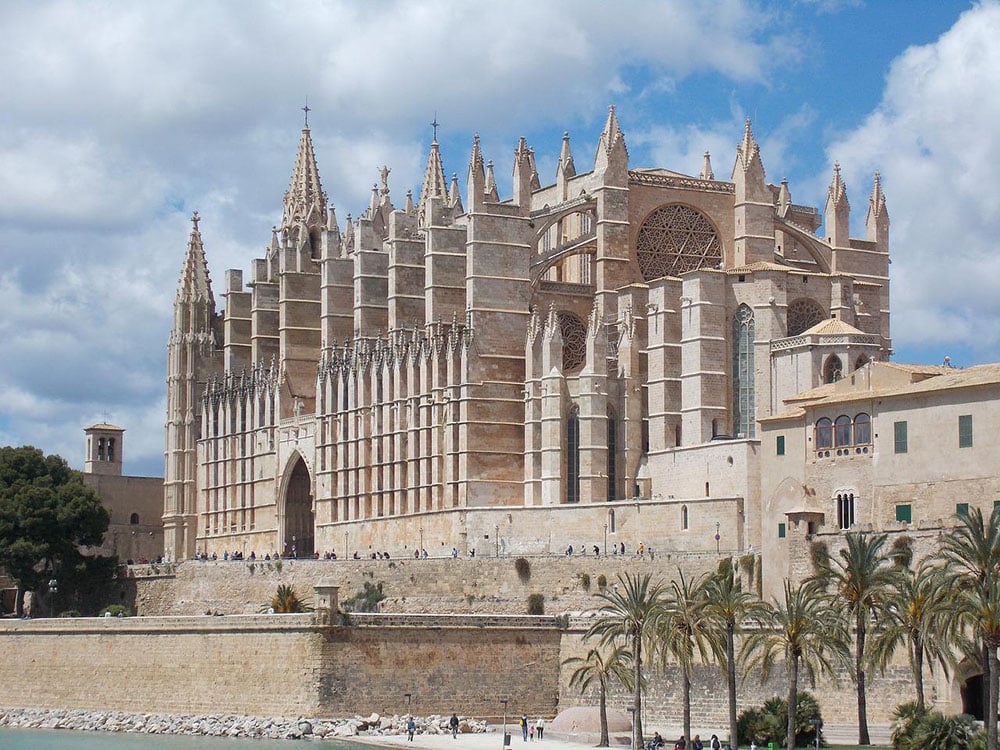
| Mean Annual Temperature: | 63°F/17.2°C |
| Hottest Month: | August |
| Coldest Month: | January |
| Highest Recorded Temperature: | 105°F |
Palma is the capital of Mallorca, the largest of the Balearic Islands off the east coast of Spain. The charming landscape and endless beach expanses make it an international tourist destination, and its long, sunny days help make it one of the hottest European cities.
Average highs range from 60°F in the winter to almost 90°F in August, and the Mediterranean makes the island extremely humid all year. Palma has an average annual humidity of 78%. Even the driest month of August still pushes over 70% humidity to match the high heat.
13. Barcelona, Spain
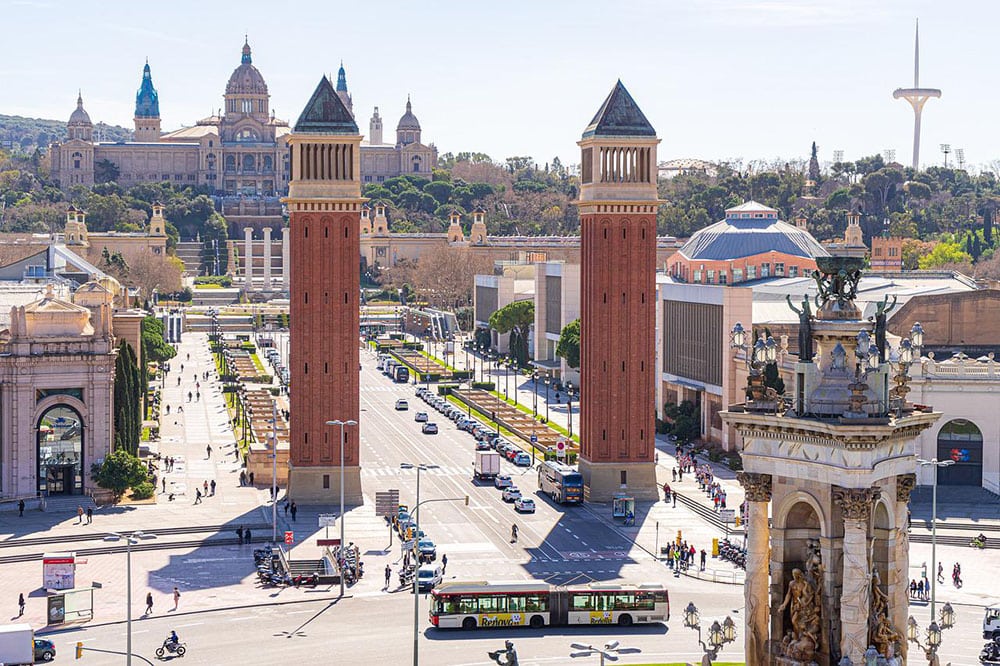
| Mean Annual Temperature: | 62°F/16.7°C |
| Hottest Month: | August |
| Coldest Month: | January |
| Highest Recorded Temperature: | 99.5°F |
Barcelona is a bucket list favorite for many travelers, football fans, lovers of art and architecture, or anyone trying to take in some of Europe’s liveliest festivals and nightlife. Spain’s second-largest city is one of Europe’s most important cultural hubs and hottest places year-round.
Winters are warm and relatively wet in Barcelona, with average lows dipping to 41° F in January before rising to 69°F in July and August, months when the highs stay around 84° F. High humidity is consistent in the urban area, maintaining a slight range of 72–77% annually.
14. Tirana, Albania

| Mean Annual Temperature: | 61°F/16.1°C |
| Hottest Month: | July |
| Coldest Month: | January |
| Highest Recorded Temperature: | 105.4°F |
Tirana is the capital of Albania, which is a mainland European country sitting above Greece and across the Ionian Sea from Italy’s bootheel. The city is Albania’s economic center, an integral component of the country’s post-Soviet success, and transcendence from its status as a developing nation.
Although Tirana has a relatively mild average annual temperature compared to many other cities on this list, its humidity is exceptional among European cities. The 24 inches of rain spread evenly throughout the year coincides with extremely muggy conditions. Humidity levels stay around 70% in July and August when average highs hit 90° F. They then increase through the fall before peaking at nearly 85% in November.
15. Podgorica, Montenegro
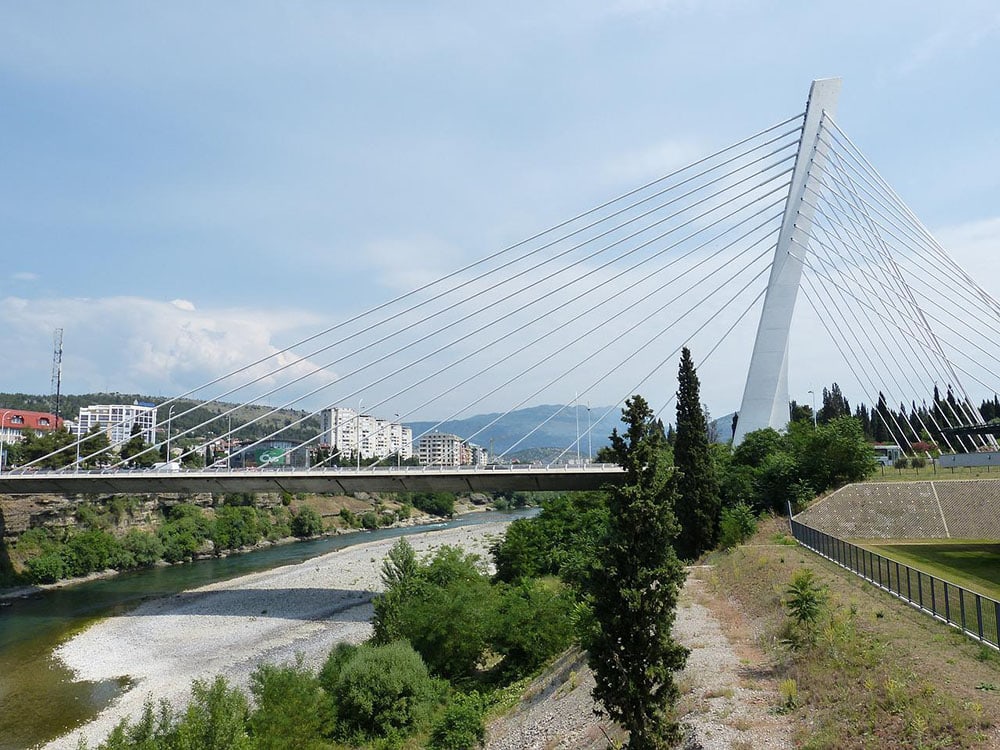
| Mean Annual Temperature: | 60°F/15.6°C |
| Hottest Month: | August |
| Coldest Month: | July |
| Highest Recorded Temperature: | 106°F |
Podgorica is the capital of Montenegro, which is located just north of Albania. It is the wettest European capital, receiving 65 inches of rain per year, and its variable climate swings from hot and dry summers to cool and wet winters. Humidity levels have a wide range, with 50% humidity accompanying average 90° highs in July and August and 75% humidity arriving with cooler November-January weather.
Final Thoughts
There are many aspects to planning a safe and exciting European trip; sometimes, it’s hard to account for all the variables. As fascinating as one destination may seem, overlooking the climate conditions can instantly turn your vacation into a struggle. Remember these European hotspots the next time you travel, and if any of them make your shortlist for the next family getaway, be sure to pack plenty of sunscreen!
Featured Image Credit: MarcinCzerniawski, Pixabay
Contents

